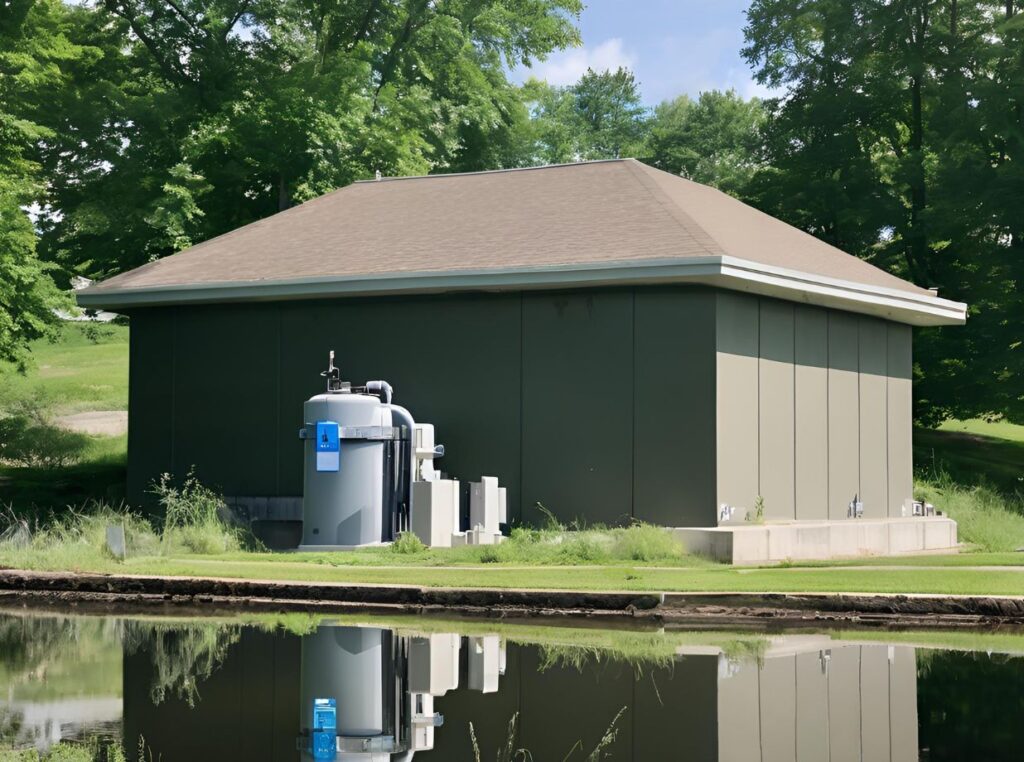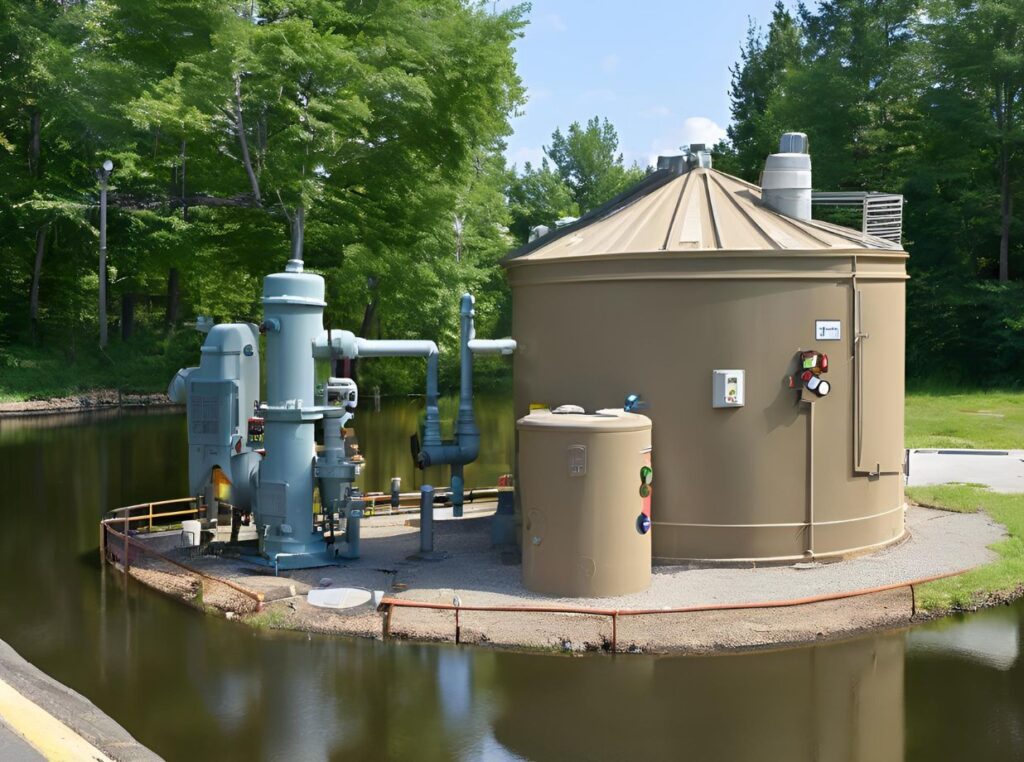Have you ever wondered about the essential differences between lift stations and pump stations in water management systems? These terms are often used interchangeably, yet they serve distinct functions in the realm of waste and water conveyance. This treatise aims to elucidate the disparities between lift stations and pump stations, comprehensively examining their purposes, operations, components, and applications. This detailed exploration will enhance your grasp of these vital infrastructure elements.
Introduction to Water Conveyance Systems
In the management of water and wastewater, conveyance systems play a pivotal role in transporting water from one location to another. As urban environments expand and population densities increase, the need for efficient water management systems becomes paramount. Among the myriad of systems deployed, lift stations and pump stations are particularly important.
The Importance of Water Management
Water management isn’t merely about transportation; it encompasses the collection, distribution, and treatment of water. By understanding the infrastructure that supports these processes, such as lift stations and pump stations, you can better appreciate how communities manage and sustain their water resources.
Definition and Purpose
While both lift stations and pump stations serve the primary function of transporting fluids, they operate under different conditions and requirements.
What is a Lift Station?
A lift station is a vital component in wastewater and stormwater management, used to move waste material through parts of a sewer or stormwater system when gravity flow alone is insufficient. Lift stations are typically employed in low-lying areas where wastewater must be pumped to higher elevations to reach the next stage of treatment or disposal.
Key Components of Lift Stations
A lift station typically includes the following fundamental components:
- Sewage Receivers (Wet Wells): These are pits or receptacles where sewage is stored temporarily before being pumped out.
- Pumps: These are submersible or dry well pumps that elevate the sewage from lower to higher elevations.
- Valves: They regulate the flow and pressure of the water or sewage.
- Control system: Includes timers, level sensors, and alarms for monitoring and control.
- Piping: Conduits that direct the flow of sewage into and out of the station.
What is a Pump Station?
A pump station primarily focuses on moving potable water or sewage over long distances, or when gravity flow is impractical. Unlike lift stations, pump stations are involved in many applications beyond sewage transport, including flood control, irrigation, and potable water distribution.
Key Components of Pump Stations
The main components typically found in a pump station include:
- Pumps: These are the heart of the pump station, propelling fluids through the system.
- Motors: Provide the power necessary for pump operation.
- Check and Valve Systems: Ensure unidirectional flow, preventing backflow that could disrupt the process.
- Instrumentation and Controls: Monitor flow rates, pressure, and system health.
- Housing Structure: Encloses and protects the mechanical and electrical components.

Operational Differences
One of the significant ways lift stations and pump stations differ is in their operation, which influences their application within water management systems.
How Lift Stations Operate
Lift stations leverage gravity-assisted flow wherever possible. As wastewater enters the lift station, it collects in a wet well. Once the sewage level reaches a predetermined point, pumps are activated to elevate the sewage to the next stage of transport or treatment. The operation is often automated, minimizing the need for human intervention.
How Pump Stations Operate
Pump stations, on the other hand, are designed to handle larger volumes and longer transmission distances. They function by continuously or selectively activating pumps to maintain optimal flow and pressure. These stations are more versatile and can be integrated into various water systems, such as maintaining water pressure in urban water distribution networks.
Applications and Use Cases
Understanding the specific use cases helps elucidate why one system may be chosen over the other in various scenarios.
Use Cases for Lift Stations
Lift stations are predominantly used in:
- Wastewater Management: Particularly in areas with uneven topography where sewage must be moved from lower to higher elevations.
- Stormwater Systems: To manage and redirect rainwater, preventing urban flooding.
- Industrial Applications: In facilities where liquid waste handling is required.
Use Cases for Pump Stations
Pump stations find application in a broader array of circumstances, including:
- Potable Water Distribution: Ensuring consistent water supply across varying terrains.
- Irrigation Systems: Propelling water through agricultural lands for accurate distribution.
- Flood Control: In flood-prone regions, pump stations can be critical for controlling water levels.
- Industrial Processes: Handling fluids in manufacturing, processing, or chemical industries.

Design Considerations
Different design considerations are key to successfully implementing lift stations and pump stations.
Design Considerations for Lift Stations
Designing a lift station involves factors such as:
- Capacity Requirements: Estimating peak flow volumes to prevent overflow.
- Elevation Changes: Accounting for differences in height between the inlet and outlet.
- Maintenance Access: Ensuring components are accessible for repair and maintenance.
- Odor Control: Implementing systems to minimize smell and improve air quality around the station.
Design Considerations for Pump Stations
Key design aspects for pump stations include:
- Pump Selection: Choosing pumps based on the volume, viscosity, and distance requirements.
- Energy Efficiency: Ensuring the system minimizes energy consumption while meeting operational demands.
- System Redundancy: Incorporating backup pumps to enhance system reliability.
- Environmental Impact: Assessing and mitigating the impact of the pump station on its surroundings.
Similarities and Overlapping Functions
While it’s crucial to delineate differences, it’s equally important to understand the aspects where lift stations and pump stations overlap.
Commonalities Between Both Systems
- Pumping Mechanism: Both systems operate on the principle of pumping fluids from one place to another, albeit under different circumstances.
- Infrastructure Components: Many of the core components, such as pumps and valves, are similar in nature, albeit differing by design specifications to meet their specific needs.
- Automation Capabilities: Modern variations of both systems can be automated to enhance efficiency and reliability.
- Maintenance Needs: Regular maintenance is crucial in both systems to ensure continuous and optimal performance.
Challenges and Mitigations
Challenges in operating lift stations and pump stations primarily revolve around maintenance, efficiency, and environmental concerns.
Challenges with Lift Stations
- Mechanical Failures: Pumps and motors can suffer wear and tear, necessitating regular maintenance and timely replacement.
- Blockages: Debris in wastewater can obstruct pumps, causing inefficiencies or failures.
- Odor Emissions: Poorly managed lift stations can emit unpleasant odors, affecting nearby populations.
Mitigations for Lift Stations
- Regular inspections and maintenance schedules to reduce mechanical failures.
- Use of screens or grinders to handle debris and prevent blockages.
- Installation of odor control systems, such as air filters or chemical treatments.
Challenges with Pump Stations
- Energy Consumption: High-power motors lead to substantial energy demands.
- Noise Pollution: Pump operations can generate significant noise.
- Infrastructure Aging: Over time, components may degrade, causing inefficiencies or system failures.
Mitigations for Pump Stations
- Employ energy-efficient pumps and motors to decrease consumption.
- Utilize sound-dampening materials or enclosures to minimize noise impact.
- Implement an asset management system for timely upgrades and component replacements.
Conclusion: Making Informed Choices
Understanding the differences and nuances between lift stations and pump stations allows you to make informed decisions about their implementation and management. Both systems are integral parts of water management infrastructure, ensuring the seamless transport of water and wastewater across various terrains. By appreciating their individual roles, applications, and design considerations, you can better support the development of sustainable and efficient water management solutions.
The knowledge encapsulated within these systems also underlines the technological and engineering prowess required to overcome the challenges posed by natural topographies and urban development needs. Whether it’s addressing gradient challenges with a lift station or managing long-distance water supply via a pump station, each system is tailor-made to meet specific requirements, reflecting the intricacies of modern water infrastructure management.
